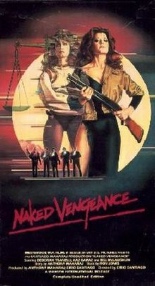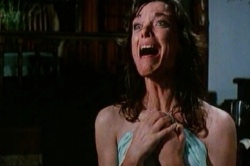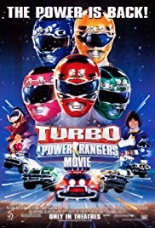
 The intergalactic pirate Divatox — whose name kinda sounds like a feminine hygiene product of some sort — is chasing a little person dressed in an ill-fitting troll costume through the woods on a swirling green planet; back here on Earth, however, a young kid named Justin is feeling a little blue because his mom is dead. It doesn’t help when a random Power Ranger, right in the middle of a training sesh, spin-kicks himself right out of the ring and into a broken back. Ouch!
The intergalactic pirate Divatox — whose name kinda sounds like a feminine hygiene product of some sort — is chasing a little person dressed in an ill-fitting troll costume through the woods on a swirling green planet; back here on Earth, however, a young kid named Justin is feeling a little blue because his mom is dead. It doesn’t help when a random Power Ranger, right in the middle of a training sesh, spin-kicks himself right out of the ring and into a broken back. Ouch!
Meanwhile, the typical mutants-on-ice monsters are cutting off their hands and such as the caustically attractive Divatox explains the film’s main plot points for those who walked in too late to catch the opening Star Wars-esque crawl as Lerigot, the mini-wizard who reminds me of Gwildor from Masters of the Universe, sadly, shoots himself to Earth and lands in a wildlife preserve in, presumably, Africa; he immediately meets a lion and shoots pleasant-enough fireballs from his hand. Also, monkeys throw feces at him, which I can fully understand.
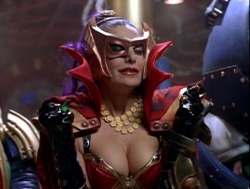 As area losers Skull and Bulk are kidnapped by Divatox’s fish-shaped pirate ship, Power Rangers leader Tommy wrestles somewhat convincingly with a rubber anaconda in the jungle. Once they find Lerigot and take him back to PR HQ, that spazzy robot Alpha gives the Rangers new powers which, if you can believe it, turns out to be some new cars … turbo cars, but still.
As area losers Skull and Bulk are kidnapped by Divatox’s fish-shaped pirate ship, Power Rangers leader Tommy wrestles somewhat convincingly with a rubber anaconda in the jungle. Once they find Lerigot and take him back to PR HQ, that spazzy robot Alpha gives the Rangers new powers which, if you can believe it, turns out to be some new cars … turbo cars, but still.
Now, it’s up to the Power Rangers to not only stop Divatox before she marries an incarnation of Satan, but also rescue retired Rangers Kimberly and Jason before they are sacrificed to said demonic being. Mind you, this is just the first 30 minutes of the movie; sure, it sounds like a lot going on, but keep in mind that the next hour is just wholly repetitive fight scenes, with the mostly basic cars offering very little turbo-charged power for these anonymous Rangers.
While the budget has definitely been given quite a bit of high-octane Nos, this new cadre of superheroes is, sorry to say, an unlikable crew that might have worked well on the small screen, but in a movie theater, lacked the personality that made the original team so much fun. But, then again, I am a 40-year-old man that just watched Turbo: A Power Rangers Movie, so what the hell do I know? —Louis Fowler

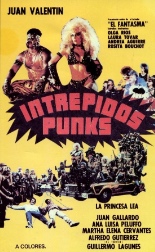
 With a title that translates to
With a title that translates to 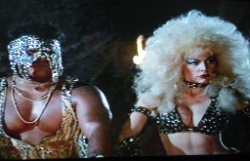
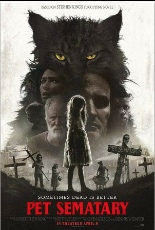
 Love, like or loathe 2017’s
Love, like or loathe 2017’s 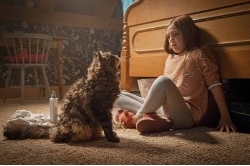

 Three years after Norway showed Hollywood what a contemporary disaster movie can and should be with
Three years after Norway showed Hollywood what a contemporary disaster movie can and should be with 
